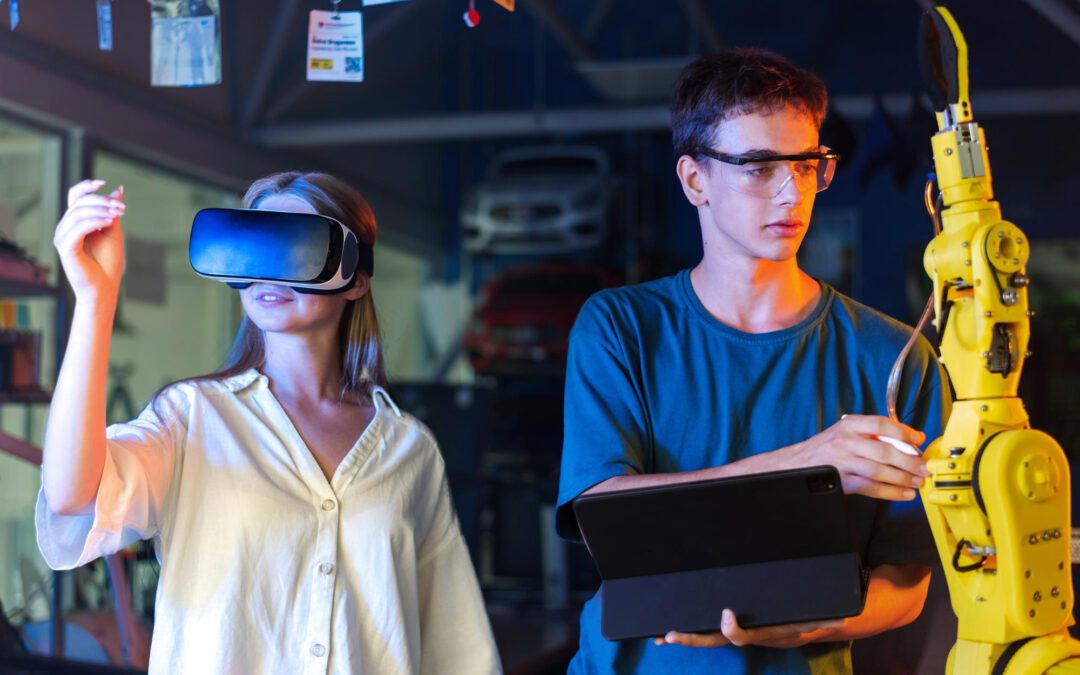In an era where technology constantly reshapes our world, the concept of Digital Twins has emerged as a revolutionary force, transforming various sectors from real estate to banking. These virtual replicas of physical entities offer unprecedented insights, optimization opportunities, and predictive capabilities. As businesses across the globe harness the power of Digital Twins, it is crucial to understand their significance, applications, and the balance between their merits and shortcomings.
What is a Digital Twin?
A Digital Twin is a dynamic, real-time digital counterpart of a physical object or system. It integrates data from the physical world, such as sensors and IoT devices, with advanced analytics, artificial intelligence (AI), and machine learning (ML) to simulate, predict, and optimize the performance of the corresponding real-world entity. By mirroring the physical world in a digital environment, Digital Twins enable organizations to visualize, analyze, and enhance operations.
Real Estate: Enhancing Efficiency and Sustainability
In the real estate sector, Digital Twins are revolutionizing how properties are designed, built, and managed. For instance, developers use Digital Twins to create detailed 3D models of buildings before construction begins. This allows for virtual walkthroughs, helping architects and clients identify potential issues and make informed decisions early in the design process.
Moreover, once a building is operational, its Digital Twin can monitor real-time data from various systems—HVAC, lighting, security, and more. This continuous monitoring enables predictive maintenance, reducing downtime and operational costs. For example, if a sensor detects an anomaly in the HVAC system, the Digital Twin can predict when the system might fail and schedule maintenance before a breakdown occurs.
In terms of sustainability, Digital Twins contribute significantly by optimizing energy usage. By analyzing data on energy consumption and environmental conditions, Digital Twins can suggest adjustments to reduce waste and enhance efficiency, ultimately lowering the building’s carbon footprint.
Banking: Revolutionizing Risk Management and Customer Experience
The banking sector is also experiencing the transformative power of Digital Twins. Banks create digital replicas of their processes, products, and even customer interactions to gain deeper insights and improve efficiency. For instance, a Digital Twin of a financial product—such as a loan—can simulate various economic scenarios to assess risk and performance. This helps in making more informed lending decisions and in developing products tailored to customer needs.
Customer service is another area where Digital Twins shine. By modeling customer interactions, banks can predict and respond to customer needs more effectively. For example, if a customer frequently inquires about loan options, the Digital Twin can analyze this behavior and proactively offer personalized loan products or advice, enhancing the overall customer experience.
Manufacturing and Beyond: The Broad Spectrum of Applications
Beyond real estate and banking, Digital Twins are making significant inroads into manufacturing, healthcare, and urban planning. In manufacturing, Digital Twins of machinery and production lines enable predictive maintenance, optimize workflows, and enhance productivity. In healthcare, Digital Twins of patients can simulate treatment outcomes, leading to personalized and more effective care plans. Urban planners use Digital Twins of cities to model infrastructure changes, traffic patterns, and emergency responses, improving the quality of urban life.
The Merits of Digital Twins
The advantages of Digital Twins are manifold. They provide a comprehensive understanding of complex systems, facilitate proactive maintenance, optimize resource utilization, and enhance decision-making through data-driven insights. By enabling real-time monitoring and predictive analysis, Digital Twins significantly reduce operational costs and improve efficiency.
The Shortcomings and Challenges
However, the adoption of Digital Twins is not without challenges. The creation and maintenance of Digital Twins require substantial investments in technology and infrastructure. There are also concerns about data privacy and security, as the integration of real-time data from various sources could potentially expose sensitive information to cyber threats. Moreover, the complexity of developing accurate and functional Digital Twins necessitates a high level of expertise and can be resource-intensive.
Conclusion
Despite these challenges, the potential of Digital Twins to transform industries is undeniable. As technology continues to evolve, the applications and benefits of Digital Twins will only expand, offering new opportunities for innovation and efficiency. By embracing this cutting-edge technology, businesses can not only stay ahead of the curve but also pave the way for a smarter, more connected future.
In conclusion, the era of Digital Twins has arrived, bringing with it a wave of transformation that promises to redefine the way we interact with the world around us. As industries continue to explore and implement this technology, the vision of a seamlessly integrated digital and physical world becomes increasingly tangible, heralding a new dawn of innovation and progress.
—
Niraj Gupta is a seasoned professional with over 19 years of experience in building marketing, business, and Omnichannel strategies for corporations across the globe. Having worked in various geographies, including the USA, France, Singapore, India, Vietnam, and Cambodia, Niraj currently serves as the Director of Macro Computing Solutions Co., Ltd in Cambodia.
